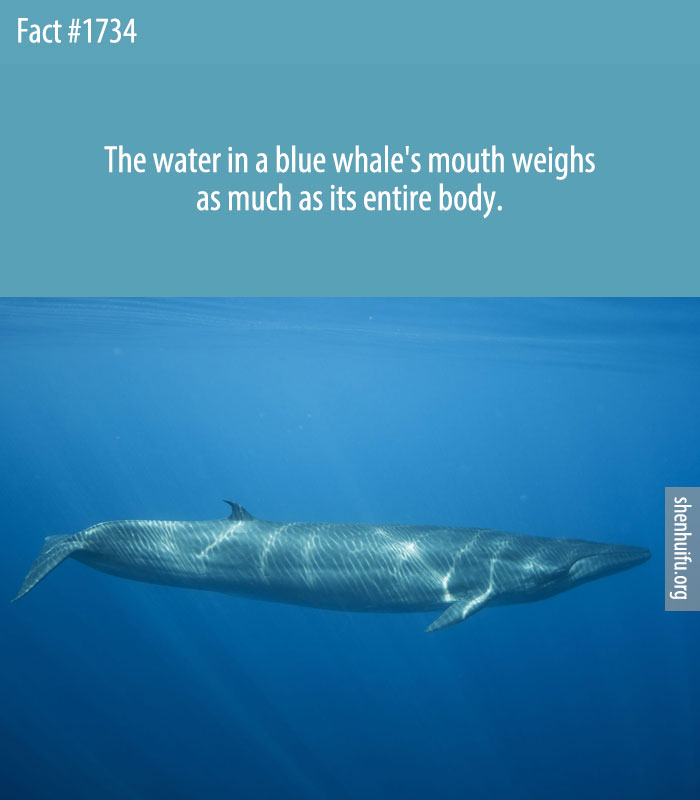
The water in a blue whale’s mouth weighs as much as its entire body.
The blue whale is the largest animal that has ever lived. Ironically, it sustains its massive bulk by eating some of the smallest creatures in the ocean – krill.
The tongues of rorquals are less muscular but are thought to be more elastic than those of other mammals. When a blue whale opens its mouth near a school of krill, water gushes in. The tongue is then pushed toward the bottom of the mouth and, under pressure, is turned back on itself like the finger of a glove, which forms a pocket that can hold water. The pressure also causes the mouth to swell around the ventral grooves that cover the ventral surface of the whale from the front of the jaw to the navel. In rorquals, the nerves in the tongue and the walls of the mouth are unique: their ability to stretch allows them to double in length without snapping! This is what allows them to engulf so much water, up to 90 tonnes in the case of the blue whale, an animal that tips the scales at between 50 and 110 tonnes.
